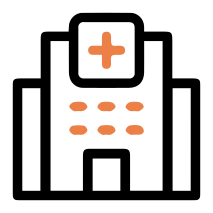Bone PET/CT Scan: Purpose, Procedure, Cost, and Side Effects
Introduction
A bone PET/CT scan is an advanced imaging technique that combines Positron Emission Tomography (PET) with Computed Tomography (CT) to offer a comprehensive view of bone health and pathology. This hybrid imaging modality is particularly useful in diagnosing and managing a range of bone-related conditions, including cancers that affect the bones, infections, and inflammatory diseases. By integrating the functional insights of PET with the detailed anatomical information from CT, bone PET/CT scans provide a thorough evaluation of both the structure and function of the bones.
Purpose of Bone PET/CT Scan
The primary purpose of a bone PET/CT scan is to assess bone metabolism and identify abnormalities in bone tissue. This imaging technique is valuable in several clinical contexts:
- Diagnosing Bone Cancers: Bone PET/CT scans are instrumental in identifying and characterizing primary bone cancers such as osteosarcoma and Ewing’s sarcoma, as well as secondary bone cancers that have metastasized from other organs. The scan helps determine the extent of the disease, assess tumor activity, and guide treatment planning.
- Evaluating Metastatic Disease: For patients with cancers that are known to spread to the bones, such as breast, prostate, or lung cancer, bone PET/CT scans help detect and monitor bone metastases. This is crucial for assessing the extent of metastatic spread and planning appropriate treatment strategies, including radiation therapy and systemic treatments.
- Detecting Bone Infections: PET/CT imaging is useful in diagnosing osteomyelitis, an infection of the bone. The scan helps differentiate between infected and non-infected bone areas, allowing for targeted treatment and surgical intervention if necessary.
- Assessing Inflammatory Bone Diseases: Conditions such as rheumatoid arthritis and Paget’s disease can cause significant changes in bone metabolism and structure. Bone PET/CT scans help evaluate the extent of inflammation and bone damage, guiding management and monitoring disease progression.
- Planning and Monitoring Treatment: The detailed imaging provided by a bone PET/CT scan is essential for planning and evaluating the effectiveness of treatments. It helps in assessing the response to therapy, monitoring for recurrence of disease, and making informed decisions about further interventions.
Procedure of Bone PET/CT Scan
The procedure for a bone PET/CT scan involves several steps designed to ensure accurate and reliable imaging results:
- Preparation: Before the scan, patients may be required to fast for several hours, as high blood sugar levels can affect the uptake of the radioactive tracer used in the scan. Additionally, patients should inform their healthcare provider about any medications they are taking and any recent medical procedures or conditions that could impact the scan results.
- Tracer Injection: During the procedure, a small amount of radioactive tracer, typically fluorodeoxyglucose (FDG) or another bone-specific tracer, is injected into a vein in the patient’s arm. FDG is a glucose analog that accumulates in areas of high metabolic activity, including cancerous and infected tissues.
- Waiting Period: After the tracer injection, there is a waiting period of approximately 30 to 60 minutes to allow the tracer to circulate and be absorbed by the bone tissues. During this time, patients are generally asked to rest quietly to ensure optimal distribution of the tracer.
- Imaging: The actual imaging process involves positioning the patient on a scanning table that moves through the PET/CT scanner. The CT scan is performed first to capture detailed anatomical images of the bones and surrounding structures. Following this, the PET scan is conducted to assess the functional aspects of the bones, such as metabolic activity and the presence of disease.
- Completion: The entire procedure typically takes between 60 to 90 minutes. After the scan, patients can resume their normal activities, as the amount of radiation exposure from the procedure is minimal and not associated with significant risks.
Cost of Bone PET/CT Scan
The cost of a bone PET/CT scan can vary widely depending on several factors, including the geographic location, the healthcare facility, and whether the scan is covered by insurance. On average, the cost ranges from $2,500 to $6,000 in many parts of the United States and Europe. This price generally includes the scan itself, the use of advanced imaging equipment, and interpretation by a radiologist.
In countries with different healthcare systems or lower costs of medical services, such as some regions in Asia, the cost may be lower. Patients should check with their healthcare provider and insurance company to understand the specific costs and coverage options related to their scan. Some insurance plans may cover the expense if the scan is deemed medically necessary, but it is important to verify coverage details beforehand.
Side Effects of Bone PET/CT Scan
Bone PET/CT scans are generally safe and well-tolerated, but there are potential side effects and considerations to be aware of:
- Radiation Exposure: PET/CT scans involve exposure to ionizing radiation, which is a concern, particularly if multiple scans are needed over time. However, the radiation levels from a single scan are relatively low and considered safe for most patients. It is important to discuss any potential risks with your healthcare provider, especially if you have a history of frequent imaging.
- Allergic Reactions: Although rare, some patients may experience allergic reactions to the radioactive tracer or contrast agents used during the scan. Symptoms might include itching, rash, or swelling. It is important to inform your healthcare provider of any known allergies before the procedure.
- Discomfort: The injection of the radioactive tracer may cause mild discomfort or bruising at the injection site. Additionally, some patients might experience feelings of anxiety or claustrophobia while inside the PET/CT scanner. For those who are anxious, discussing these concerns with the medical team can help manage discomfort.
- Radiation Sensitivity: Pregnant women and young children are more sensitive to radiation. Therefore, bone PET/CT scans are generally avoided in these populations unless absolutely necessary and with appropriate precautions to minimize radiation exposure.
Frequently Asked Questions (FAQs)
What is a bone PET/CT scan used for?
A bone PET/CT scan is used to assess various bone-related conditions by combining functional imaging with detailed anatomical views. It is particularly valuable for diagnosing and monitoring bone cancers, detecting bone infections, evaluating inflammatory bone diseases, and planning or assessing the effectiveness of treatments. By providing both structural and functional information, the scan helps clinicians make informed decisions about diagnosis and treatment.
How should I prepare for a bone PET/CT scan?
Preparation for a bone PET/CT scan typically involves fasting for several hours before the procedure to ensure optimal imaging results. This helps to reduce interference from high blood sugar levels on the radioactive tracer used in the scan. Patients should also inform their healthcare provider about any medications they are taking and any recent medical procedures or conditions that might affect the results. Specific preparation instructions will be provided by your healthcare facility.
What happens during a bone PET/CT scan?
During the scan, a small amount of radioactive tracer is injected into a vein in your arm. After a waiting period of about 30 to 60 minutes, which allows the tracer to be absorbed by the bone tissues, you will be positioned on a scanning table that moves through the PET/CT scanner. The CT scan is performed first to capture detailed anatomical images, followed by the PET scan to assess metabolic activity and the presence of disease. The entire procedure usually takes 60 to 90 minutes.
Is a bone PET/CT scan painful?
A bone PET/CT scan is generally not painful. The most discomfort you may experience is from the injection of the radioactive tracer, which is usually brief and minor. Some patients might feel anxious or claustrophobic while inside the scanner, but these feelings can often be managed with relaxation techniques and communication with the medical team.
How long does a bone PET/CT scan take?
The entire process of a bone PET/CT scan typically takes between 60 to 90 minutes. This includes the time needed for tracer injection, the waiting period, and the actual imaging. The time spent in the scanner itself is relatively short, with the majority of the duration involving preparation and waiting.
Are there any side effects from a bone PET/CT scan?
Side effects from a bone PET/CT scan are generally minimal. Potential side effects include minor discomfort from the tracer injection, a slight risk of allergic reactions, and temporary feelings of anxiety or claustrophobia. The scan involves a low level of radiation, which is considered safe for most patients, but it’s important to discuss any concerns with your healthcare provider, especially if multiple scans are required.
How much does a bone PET/CT scan cost?
The cost of a bone PET/CT scan can vary widely depending on location, healthcare facility, and insurance coverage. On average, the cost ranges from $2,500 to $6,000. It is advisable to consult with your healthcare provider and insurance company to understand the specific costs and coverage options associated with your scan. Some insurance plans may cover the expense if the scan is deemed medically necessary.
Will I need to stay in the hospital after the scan?
Typically, a bone PET/CT scan does not require an overnight hospital stay. Most patients can return to their normal activities immediately after the scan. However, if you are undergoing the scan as part of a broader treatment plan or if any complications arise, your healthcare provider will give you specific instructions regarding follow-up and any potential need for observation.
How do I get the results of my bone PET/CT scan?
The results of your bone PET/CT scan will be interpreted by a radiologist, who will prepare a detailed report. This report will be sent to your referring physician, who will then discuss the findings with you. Your physician will explain the results, their implications for your bone health, and the next
steps in your treatment plan based on the scan’s findings.
Are there any alternatives to a bone PET/CT scan?
Yes, there are alternatives to a bone PET/CT scan, including traditional bone scans (nuclear medicine scans), Magnetic Resonance Imaging (MRI), and X-rays. Each of these methods provides different types of information about bone health. The choice of imaging technique depends on the specific clinical question and patient condition. Your healthcare provider will determine the most appropriate method based on your individual needs and medical history.











 and then
and then